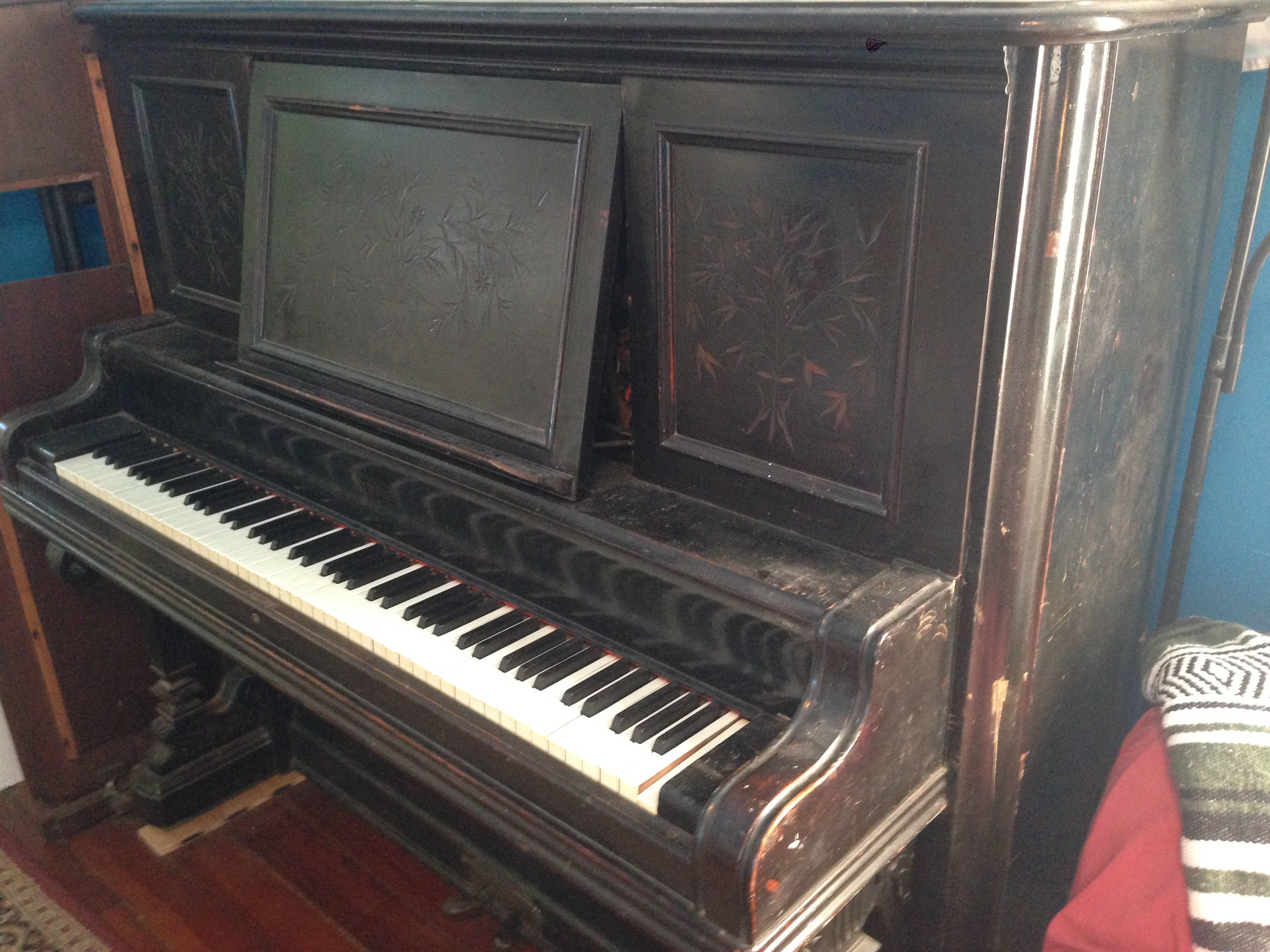One of the biggest choices a person must make after deciding to tune a piano is which tuning hammer to use. There are tons of choices out there between different materials, lengths, head angles, and tip lengths. Most quality tuning hammers are made of three separate parts: the lever, the head, and the tip. Many low quality hammers (and some high quality hammers) are only comprised of two or even a single piece. Some levers are sold with a head and tip included, while others are not.
Whatever you do, DO NOT DO THIS. According to the original poster, this setup "works pretty well." This person has obviously never used a real tuning hammer. Not only will it be nearly impossible to precisely adjust a tuning pin this way, it will also likely damage the tuning pins.
Materials
There are four different materials that are commonly used for tuning levers: steel, carbon fiber, aluminum, and titanium, with the first two being by far the most popular. Wood is often used as well, but only to create a comfortable handle, never as a structural element.
steel
Steel tuning levers come in all shapes, sizes, and prices. Steel is stiffer than titanium but more flexible than aluminum or carbon fiber. Stiffness is a very desirable quality as a stiffer lever will flex less and give better feedback about whether or not the tuning pin is actually turning. Look for levers made of tubular steel rather than solid steel rods. They provide extra stiffness without any extra weight. Most of the cheapest tuning levers are made of solid steel with a wood handle. These are often advertised as "student" model levers. There are many higher-end steel levers available as well.
carbon fiber
Carbon fiber has the benefit of being light and extremely stiff at the same time. It ranks higher in both categories than any of the other options. Appropriately, it also ranks at the top of the price chart.
aluminum & titanium
Aluminum and titanium rank 2nd and 4th for stiffness and 2nd and 3rd for weight, respectively. Titanium is comparable to carbon fiber with respect to price, while aluminum is generally in between carbon fiber and steel. Both are much less common than steel or carbon fiber. Aluminum has the potential to create a very stiff, lightweight, and reasonably priced lever. Titanium is generally a poor choice due to expense and lack of stiffness.
See my review of the KineOptics PTH-5-1 Aluminum Tuning Hammer
Length
An extension lever.
Theoretically, a long lever is better than a short lever. This is because most tuning is comprised of making very small rotational adjustments to the tuning pins. If your goal is to turn a tuning pin by one degree, the end of a 254 mm (10 inch) long lever must move from its starting position by 4.3 mm. A lever twice as long (20 inches) will only turn the pin about 1/2 a degree if its end is moved 4.3 mm. Basically, small adjustments are easier with a long lever.
Now, you wont find a 20 inch lever for sale anywhere, because the other thing to consider is how it will fit inside the piano (let alone inside your tool bag). Most levers are between 10" and 14" long. Some are marketed as "extension" levers which start out somewhere around 10" but can be extended to provide more torque. Some extend up to 18"! Many compact levers under 10" are also available for use in tight quarters in the low bass and high treble. These are usually only used as a companion to a full sized lever.
The other problem is that length is a double-edged sword. The longer a lever is, the more flexible it will be. This is particularly a problem with steel and titanium levers. Many tuners also report that the mechanism used in extension levers introduces a lot of flexibility.
Tip Length
Tuning tips (the socket that fits over the tuning pin) vary in length between 1" and 3". The tip length that you choose will probably go hand in hand with the head angle that you choose. This is because these two factors affect how well the lever will clear any obstructions in the piano (plate struts, stretcher, etc.) A longer tip (usually used with a shallow head angle) will get the lever further from the pin and will give it more clearance. A shorter tip (steep head angle) will keep the lever close and give less clearance.
Some tuners claim that a short tip gives them more control of the pin as there is less distance between the head and the top of the pin.
Head Angle
In addition to clearance, head angle affects how the force applied to the lever translates to the pin. This angle is calculated as a positive deviation from 90 degrees to the lever (i.e. a 10 degree head would give a 100 degree angle between the tip and lever). Available head angles vary from 5 degrees to 20 degrees. A head of 0 degrees would provide the most efficient transfer of rotational force from the lever to the tuning pin. As the angle gets larger, more of the rotational force is translated into a bending of the pin. This can be illustrated by imagining a lever with a head angle close to 90 degrees (the lever and tip are almost in a straight line). Trying to turn the pin by pushing on this lever would be completely ineffective and result in breaking the tuning pin.





















I have been servicing and tuning pianos in NOLA since 2012 after first becoming interested in piano technology in 2009. With a background in teaching bicycle mechanics, I bring a methodical mindset and a love of sharing knowledge and skills to the rich musical culture of New Orleans.